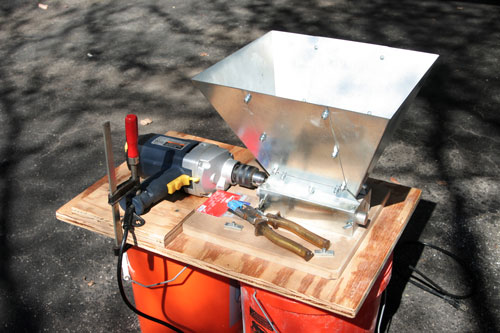- Joined
- Jul 28, 2013
- Messages
- 3,101
- Reaction score
- 5,538

Or a larger, low speed, heavy duty drill, such as this one found at Harbor Freight for $65, or less (on sale, coupons, etc).Most just use a small variable speed drill motor to turn their mills for homebrew size quanitities.

I have that same drill. How do you have yours mounted to the base plate? I'd considered seeing what thread the handle hole has and bolting it down using that.Or a larger, low speed, heavy duty drill, such as this one found at Harbor Freight for $65, or less (on sale, coupons, etc).
Here's an older version I have of a similar drill, max speed 550 rpm, almost permanently mounted on my MM2 milling station:
View attachment 822030
The bottom of the handle is the only part of the drill that's clamped down (to the base). You see the red clamp handle.I have that same drill. How do you have yours mounted to the base plate?
The hole is less than 1/4 inch in diameter, perhaps 3/16".I'd considered seeing what thread the handle hole has and bolting it down using that.
Do you use the lock on the trigger? I feel like push it in to where the trigger locks is going to fast for my taste.The bottom of the handle is the only part of the drill that's clamped down (to the base). You see the red clamp handle.
Since the drill is a beast, I've kept it removable, and is used for other jobs, occasionally.
I always intended to make a better mount/clamp for the handle, but has had no priority.
The hole is less than 1/4 inch in diameter, perhaps 3/16".
I envision a U-brace or pipe strap over the bottom of the handle, around where the clamp is now, with some foam or cork padding underneath and 2 screws should do it.
Absolutely! Milling is done hands free, that was my goal.Do you use the lock on the trigger? I feel like push it in to where the trigger locks is going to fast for my taste.
Enter your email address to join: